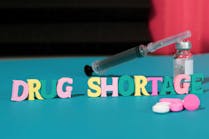Four ways high-quality medical supplies can help reduce the cost of care
The shift from volume to value-based care, with declining reimbursements and penalties for hospital-acquired conditions (HACs) and readmissions, have forced health systems and hospitals to find ways to improve quality of care while reducing costs. Reducing the per capita cost of healthcare1 is a pillar in the Triple Aim initiative of the Institute for Healthcare Improvment (IHI).
With supplies being the second largest area of expense for hospitals, product procurement is a key consideration. But it is not just about negotiating the lowest price for a product. A critical factor for healthcare organizations to consider is the impact product choices have on patients from admission through discharge and beyond. Furthermore, with labor being the largest expense area for hospitals, product selection must also take into account the impact on staff efficiency and workflows.
While high-volume, low-cost medical supplies and accessories have small price tags, their impact on clinical outcomes and cost can be significant. Since these products (e.g., blood pressure cuffs, breathing circuits/components, ECG leads, temperature probes) come into direct contact with patients, they have significant potential to deliver clinical benefits or compromise safety.
Here are four factors to consider when purchasing medical supplies and accessories to maximize the value of these products, protect patient safety and streamline workflows.
1. Single use for safety
Healthcare-associated infections (HAIs) result in tens of thousands of patient deaths, and billions of dollars in costs annually.2 Medical supplies that touch the patient have a higher source of infection risk and human error. For example, one study found even after disinfection, more than 77 percent of ECG leads were contaminated with at least one resistant pathogen.3 To reduce the risk for dangerous and costly HAIs, hospitals are increasingly adopting single use products to help reduce cross contamination.
2. Minimize waste
Seek out medical supplies with the best durability and performance to reduce waste on products that are unacceptable right out of the packaging or must be replaced before patient discharge. This can also reduce the volume of supplies thrown away because they are ineffective or not tolerated by the patient.
3. Save clinical time and labor
Clinician time is precious – and costly – therefore hospitals must find ways to keep clinicians focused on patient care rather than supply management. Purchase high-quality supplies that hold up to use in the challenging healthcare environment to stop clinical staff from having to frequently track down replacement products and reapply them. Supplies that can be used with a variety of manufacturers’ devices when used with appropriate adapters and trunk cables also save money and increase efficiency. The use of kits is another way to simplify supply use for clinicians. When a manufacturer bundles commonly used products together in a single kit it frees up clinicians to spend more time with patients instead of hunting for supplies.
4. Standardize for savings
When a hospital consolidates spend on supplies and accessories with a single vendor it is in a better negotiating position to secure volume discounts from the contracted vendor. Consolidation also reduces SKUs, improves training and safety, and makes reordering easier.
For more information on how high-quality medical supplies and accessories can help your organization reduce the cost of care, read this Frost & Sullivan white paper: Compromised Safety Can Lead to Reimbursement Penalties and Lower Patient Volumes as a Facility’s Reputation for Quality Care Suffers.
Article sponsored by Draeger
References
1 The IHI Triple Aim, http://www.ihi.org/engage/initiatives/TripleAim/Pages/default.aspx
2 https://psnet.ahrq.gov/primers/primer/7/health-care-associated-infections
3 B. Jancin, “Antibiotic-resistant pathogens found on 77% of ECG lead wires,” Cardiology News, March 2004.





